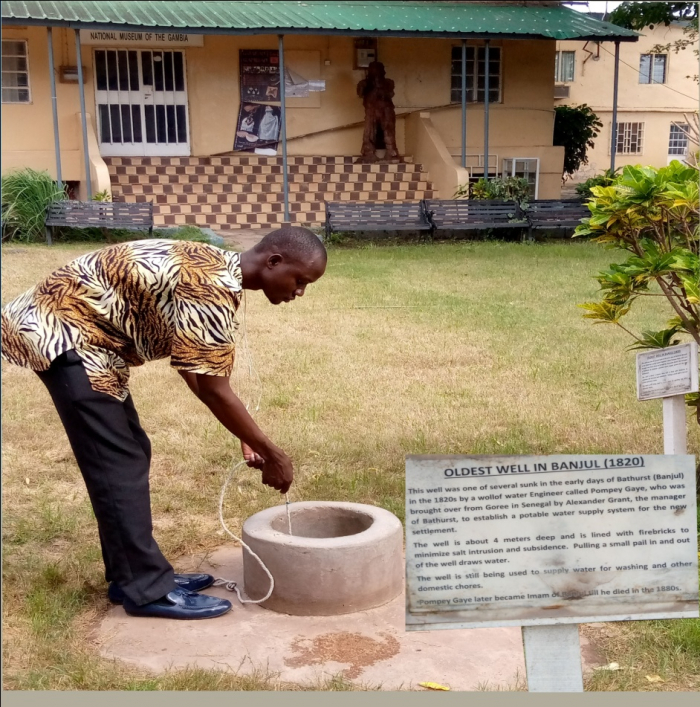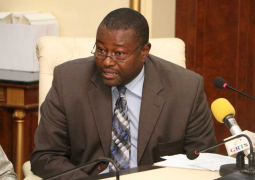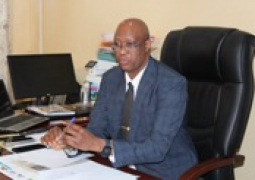
This well, which can be found in the garden in front of the Gambia National Museum at the National Centre for Arts and Culture (NCAC) premises remains the oldest well in the capital city, Banjul.
According to the signage: “this well was one of several wells sunk in the early days of Bathurst (Banjul) in the 1820s by a Wollof water Engineer called Pompey Gaye, who was brought over from Goree in Senegal by Alexander Grant, the manager of Bathurst, to establish a potable water supply system for the new settlement.”
Hassoum Ceesay, director general of the NCAC, also a historian, disclosed that the well was one of the wells sunk in the then Bathurst town, now Banjul after it was purchased and occupied by the British in 1816.
He narrated that it was a time when water supply became a big problem because Bathurst was an island – in the mouth of the River Gambia with the other side surrounded by the Atlantic. “Being an island, it became difficult to get fresh and pure water. But the only alternative for the residents to get clean potable water then was either from Barra under the King of Niumi or from Kombo under the King of Kombo.”
He explained that the two alternative places were not reliable as “they could block the water supply as a punishment,” he noted.
Based on this, “they brought water engineers led by Pompey Gaye from Goree to Bathurst to sink some wells in different places in the town of Bathurst,” DG Ceesay explained.
The well is in the National Museum, he said, “it’s the one that was supplying fresh water to the government house and army barracks. Though there were other four or five wells in other places in the Bathurst town then. But as at now, I think it is only this well here in National Museum that’s in good condition supplying fresh water when tap goes off.”
He added that with its good condition, people around the Museum still come to fetch water from the well for domestic purposes.
DG Ceesay acknowledged the importance of technology on the well, saying it was sunk on an artisan spring which is very clean. The wall of the well is lined with firebricks to prevent subsidence of the soil of the sands and also block the spring to minimise salt intrusion.
“Meaning it is very pure and technological drilling and it is one of the highlights of the National Museum because when visitors come to visit the Museum, they always check on it,” he affirmed.
The well is not very deep; it is about 4 meters but always full of fresh and clean water “for the past 200 hundred years. It never went dry and it is well protected. It is really an important relic of the colonial history of Bathurst town to show the migration from well to the pipe borne water in the 1930s until date,” he noted.
Pompey Gaye who sunk the well later became an imam of Banjul till he died in the 1880s.





